Cheating and Plagiarism: Unveiling Consequences and Prevention Strategies

Ashley Merit
Content writer and editor for Netus.AI
Table of Contents
Cheating and Plagiarism. As students progress in their academics, developing skills such as critical thinking and creativity becomes essential. However, some students resort to cheating and plagiarism, using others’ work to complete projects without putting in the effort to develop their own ideas. This not only hinders their learning experience but also undermines their ability to grow as independent thinkers.
Assignments are designed to refine students’ writing and critical thinking abilities. Cheating on these tasks fails to enhance one’s knowledge and inhibits the development of analytical skills. In the long run, individuals who consistently rely on cheating may struggle to form their own inferences and lack the creative capacity to excel in their chosen fields.
Key Takeaways
- Cheating and plagiarism inhibit the development of critical thinking and creativity.
- Assignments are meant to refine students’ skills and contribute to their personal growth.
- Relying on cheating may lead to long-term consequences and hinder future success.
Make Students Aware of the Consequences of Cheating
Many students tend to take shortcuts in completing their work, such as copying from a classmate’s assignment or homework, which falls under academic dishonesty. Teachers play a crucial role in discouraging this behavior by emphasizing the importance of individual work and appreciating those who display honest efforts.
It is essential for educators to discuss with students the negative impacts of cheating and how modern methods, such as software technology, can automatically detect plagiarized content. Informing students about the procedures and penalties for academic misconduct will not only discourage plagiarism but also make them aware of the serious consequences of dishonesty in academic settings.
The consequences of cheating include:
- Failing a course or receiving a failing grade for the copied assignment
- Expulsion from the institution in accordance with the academic honesty policy
- Legal charges if the plagiarism involves stealing the intellectual property of others, which can result in the original author suing for damages
- A damaged reputation amongst faculty and fellow students
Include the academic honesty policy in syllabi to ensure students are aware of the rules and consequences from the beginning. This will make it clear that cheating is a serious offense that can result in dismissal from the institution.
Proctoring exams and employing plagiarism-detection software will lessen the chances of students gaining an unfair advantage. Encouraging students to ask for clarification when in doubt will also help to eliminate any ignorance or unintentional dishonesty. By being proactive and addressing the consequences of cheating, educators can foster a learning environment that values academic integrity.
Encouraging Students for Exceptional Work
By recognizing and praising students for their original and satisfactory assignments, we promote a sense of academic integrity and encourage them to maintain their honesty. This proactive approach reinforces their commitment to uphold their reputation as diligent learners.
Methods of Cheating and Plagiarism Among Students
Students employ various strategies to commit plagiarism and cheat in their academic assignments. Several methods are used to outsmart plagiarism detection tools, despite the advancements in technology:
Manipulating Characters:
Character manipulation is a common tactic used by students to bypass plagiarism checkers. Hidden characters are inserted in copied texts so that the plagiarism report does not flag the content. Blank characters are used to remain undetected by plagiarism detectors or replaced by Unicode characters to maintain the document’s appearance and readability. This helps students pass plagiarism tests.
Another approach involves introducing unrelated letters with white-colored text. Plagiarism checkers consider these letters, but the printed text displays only the correct words, making the white letters invisible.
False Citations:
Citing legitimate sources is essential when including text or ideas from other works. Proper citation methods must be followed, but some students introduce false references. These could either be related to the topic without being used in the paper or entirely fabricated to create an illusion of in-depth research and citations.
Unscannable Formats:
Textual formats are easily readable by automatic plagiarism scanners. However, submitting work in a different format makes the document unscannable by these tools. This helps students evade plagiarism charges, as institutions often rely on manual evaluation to detect such attempts.
Other cheating methods include using smartphones during exams, copying notes or assignments, collaborating inappropriately in group projects, and buying pre-written papers.
To summarize, students implement various methods to cheat and plagiarize, ranging from manipulating characters and presenting false citations to using unscannable formats. These methods often attempt to deceive plagiarism checkers and claim academic dishonesty. It is crucial for educational institutions to be aware of these methods and improve their strategies to identify and prevent such activities.
Plagiarism Checker for Detecting Plagiarized Content
The rise in students finding new ways to cheat makes it crucial to scan their papers with a top-notch plagiarism checker. Employing an AI-powered plagiarism checker that uses human reasoning is the most effective method for detecting plagiarism in documents.
An AI-based plagiarism detector is excellent for identifying modified plagiarism, making it difficult to bypass detection by using special characters or letters. Some individuals may attempt to modify text or insert extra content, deceiving basic plagiarism checkers into believing their work is original.
AI-powered software catches such tricks with ease. This advanced plagiarism detection tool is available online and accessible to everyone. The software delivers a comprehensive plagiarism report for the text within seconds, including details of the plagiarized sections found in the document.
Plagiarism and cheating can severely impact a writer’s life and may even jeopardize their career. Therefore, using a high-quality online plagiarism checker is essential to prevent the rise of cheating and plagiarism in student assignments. By focusing on proper citation, paraphrasing, attribution, and adhering to citation styles like APA and MLA, writers can ensure they give credit where it is due and produce original content.
Frequently Asked Questions
Different Forms of Academic Dishonesty
Various types of academic dishonesty exist, such as:
- Plagiarism: Using someone else’s words, ideas, or work without proper acknowledgment.
- Cheating: Utilizing unauthorized materials or collaborating with others during exams or assignments.
- Fabrication: Making up data, information, or citations in academic work.
- Misrepresentation: Attempting to deceive by, for example, lying about reasons for missed assignments or exams.
Methods to Detect Plagiarism
Several approaches can help identify plagiarism in written works:
- Manual detection: Instructors can check for similarities within submitted works or compare assignments with online sources.
- Plagiarism detection software: Tools like Turnitin and Grammarly search databases and the internet to detect plagiarized content.
Consequences for Academic Misconduct
Penalties for academic misconduct differ depending on the institution’s policies, but may include:
- Having to redo the assignment or exam
- Receiving a grade of F or zero for the assignment or course
- Academic probation, suspension, or expulsion from the institution
Technology’s Role in Exacerbating Cheating
Technology can contribute to academic cheats in several ways, such as:
- Facilitating access to information during exams through smartphones, smartwatches, and other devices.
- Simplifying collaborations and sharing of assignments or solutions via social media or messaging apps.
- Offering online platforms that sell pre-written essays or custom-written assignments.
Definition of Plagiarism in Academic Writing
In academic writing, plagiarism is defined as the act of representing someone else’s work or ideas as one’s own without proper attribution or acknowledgment, either intentionally or unintentionally.
Strategies to Prevent Cheating and Plagiarism in Education
To combat cheating and plagiarism, schools and universities can implement these measures:
- Educate students on academic integrity, citation methods, and the risks of cheating or plagiarism.
- Design assignments and exams that require original thought, making it harder to copy or cheat.
- Utilize plagiarism detection software to scan submitted works and discourage dishonesty.
- Foster a culture of academic integrity and uphold strict penalties for misconduct.
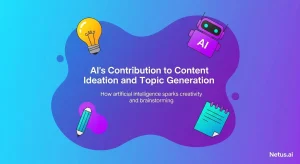
The Role of AI in Content Ideation and Topic Generation | NetusAI
AI’s contribution to content ideation and topic generation AI plays a crucial role in content creation and topic generation. Its effective application significantly reduces preparation
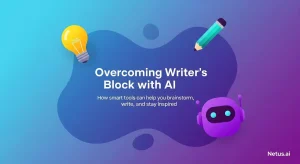
Leveraging AI to conquer writer's block | NetusAI
Overcoming writer’s block with AI Writer’s block affects all writers, new or experienced. Even for the most accomplished writers, this common and frustrating problem presents
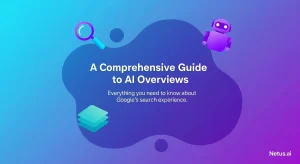
AI Overviews: A Comprehensive Guide | NetusAI
A Comprehensive Guide to AI Overviews Google has integrated AI Overviews into its search results as a knowledge panel. This feature acts like an AI
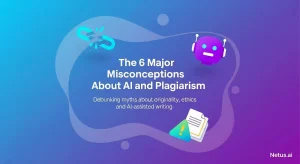
6 Common Misconceptions Regarding AI and Plagiarism | NetusAI
The 6 major misconceptions about AI and plagiarism Regarding AI and plagiarism, numerous myths, misconceptions and assumptions are circulating. Let’s distinguish between fact and fiction.
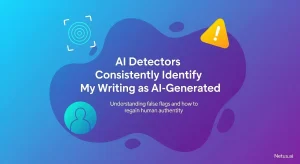
My writing is repeatedly flagged as AI generated by detection software | NetusAI
AI detectors consistently identify my writing as AI generated Even original, human-written content can face challenges from AI content detection false positives, impacting copywriters and
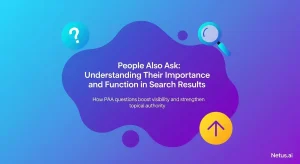
People Also Ask: Understanding their importance and function in search results
People Also Ask: Understanding their importance and function in search results A People Also Ask (PAA) search result is a zero-click Google response. It presents
